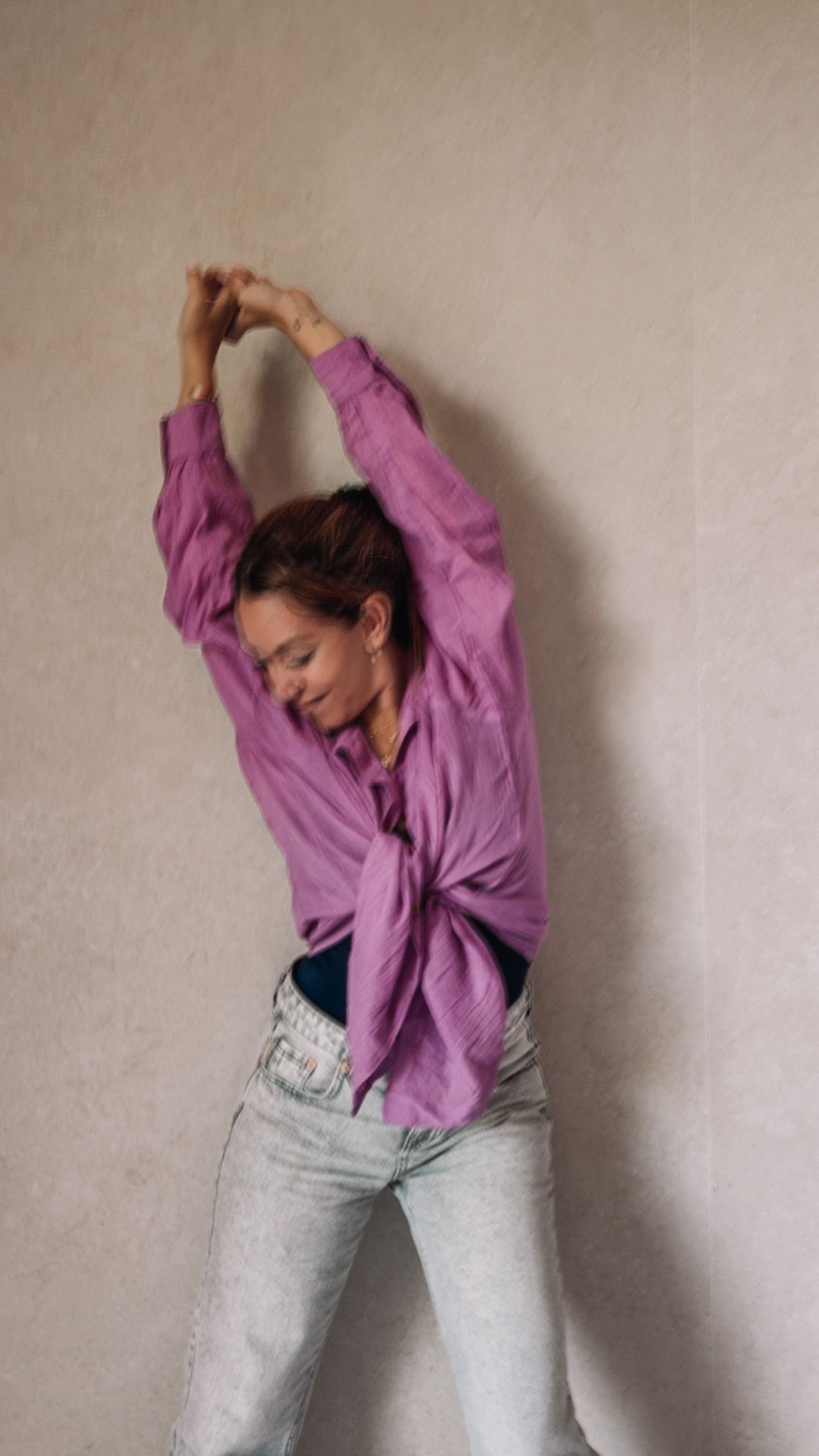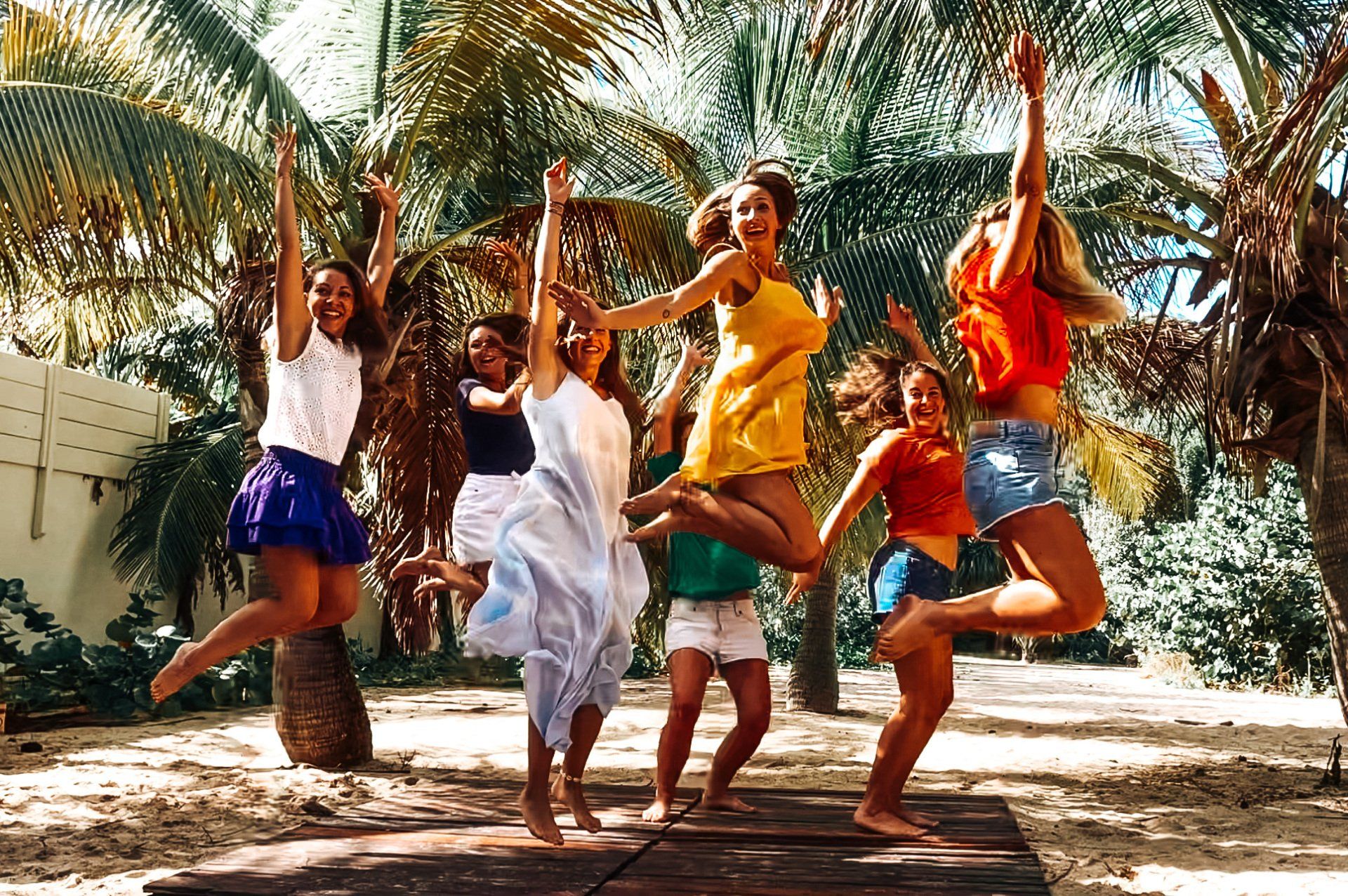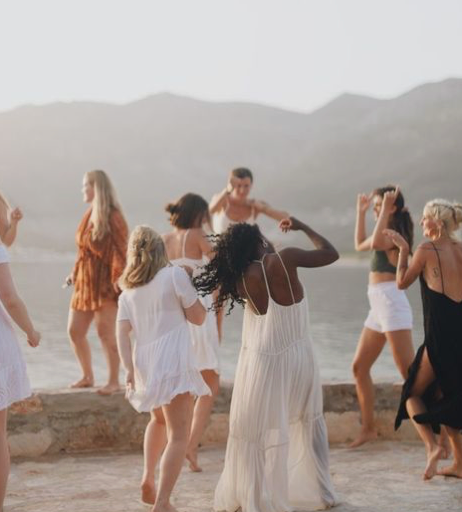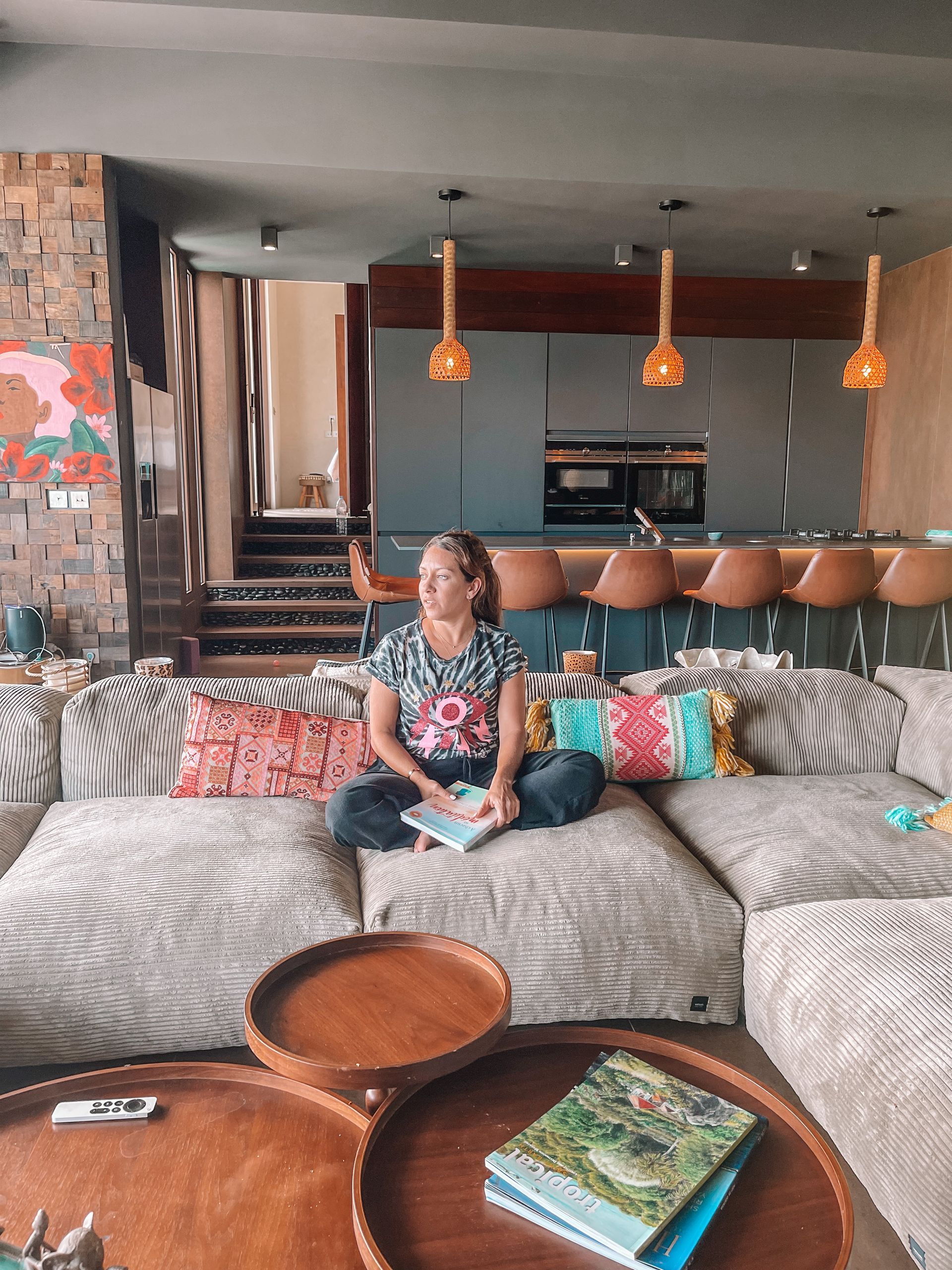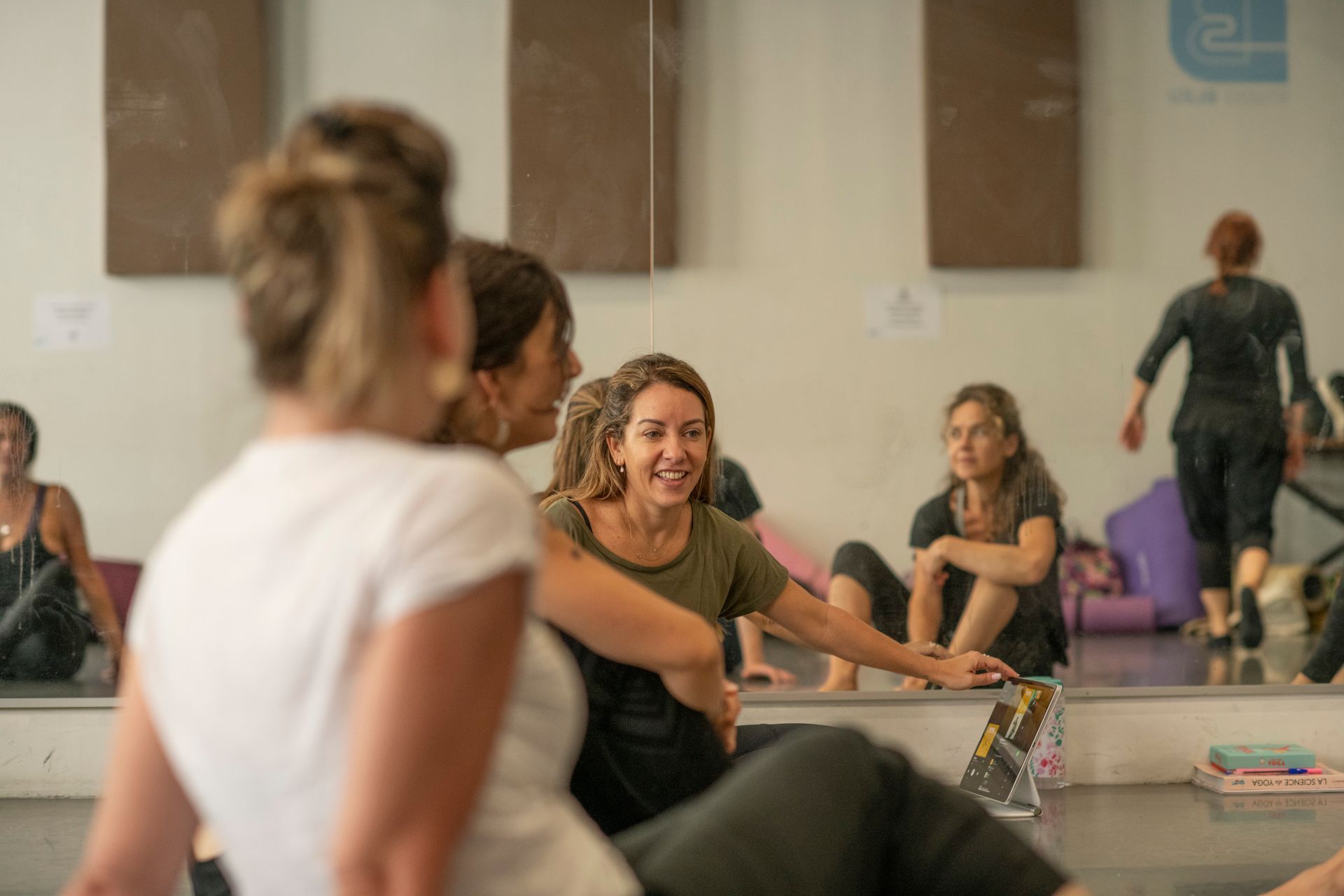Anatomy and Yoga: Impact on the Body 🌿🧘♀️🔍
Anatomy and Yoga: Impact on the Body 🌿🧘♀️🔍
Welcome to our in-depth exploration of how yoga practice impacts the various body systems, promoting overall health and enhanced well-being.
Yoga is more than just a series of postures; it's a harmonious union of body, mind, and breath that affects all aspects of our physiology.
Get ready to discover how yoga interacts with each system in your body to holistically improve your health.
Introduction to Asanas: More Than Just Stretching 🤸🏻♂️
Asanas, or yoga postures, are far more than just stretches. They are designed to strengthen, stretch, and harmonize the body.
Each posture has a specific purpose and uniquely affects the body. Regular practice not only works on your flexibility but also enhances your muscle strength, balance, and overall health.
Each asana has a direct impact on the musculoskeletal system, but its effects don't stop there. Yoga postures can also influence the circulatory system, nervous system, and even internal organs.
Skeletal System 🩻
The skeletal system, consisting of bones, cartilages, and ligaments, serves as the framework for our body.
Yoga positively influences this system by:
- Strengthening Bones: Yoga postures like Tadasana (Mountain Pose) and Virabhadrasana (Warrior Pose) apply beneficial mechanical stress to the bones, stimulating mineral deposition and strengthening the bones.
- Improving Posture and Joint Mobility: Regular practice helps to properly align the skeleton, reducing the risk of joint pain and increasing the range of motion.
In yoga, several postures specifically target bone strengthening and the improvement of posture and joint mobility. Here are a few examples of postures that particularly benefit the skeletal system:
Tadasana (Mountain Pose)
👉🏼 How to Do It: Stand with feet together or hip-width apart, engage your thighs to lift your knees without hardening the lower back. Keep shoulders relaxed and arms along the body. Align your head so that your neck is an extension of your spine.
🧘🏻♀️ Main Muscles Involved:
- Quadriceps: These muscles help stabilize the knees and thighs.
- Hamstrings and glutes: Work together to maintain alignment and stability of the hips and pelvis.
- Abdominals: Support the torso to maintain upright posture.
- Calf muscles: Help stabilize the feet and ankles.
⭐️ Benefits: Strengthens the legs, improves body alignment, and stimulates symmetry and stability of the skeleton.
Virabhadrasana (Warrior Pose)
👉🏼 Warrior I: Stand, step one foot back, keep the front foot facing forward and the back foot about 45 degrees. Bend the front knee to 90 degrees and stretch your arms up.
👉🏼 Warrior II: Position your feet as in Warrior I, but this time, extend your arms horizontally, one forward and the other back, gazing over your front hand.
🧘🏻♀️ Main Muscles Involved:
- Quadriceps and hamstrings: These muscles are heavily used to maintain the bend of the front knee and the stability of the back leg.
- Glutes: Help stabilize the hips during the pose.
- Deltoids and rotator cuff muscles (shoulders): Engaged to maintain the arms lifted (Warrior I) or extended (Warrior II).
- Obliques and abdominals: Important for maintaining torso stability and alignment.
⭐️ Benefits: Strengthens the bones of the legs and arms through the resistance of the posture, improves balance and stability, and opens the hips and shoulders.
Setu Bandhasana (Bridge Pose)
👉🏼 How to Do It: Lie on your back, bend your knees and place your feet flat on the floor, hip-width apart. Gently lift your hips towards the ceiling while keeping your hands and feet flat on the floor.
🧘🏻♀️ Main Muscles Involved:
- Hamstrings and glutes: Work to lift the hips.
- Paravertebral muscles: Help stabilize the spine.
- Abdominals: Engaged to support the torso during the lift.
⭐️ Benefits: Strengthens the bones of the back and spine, improves the flexibility of the spine and hips, and helps reduce lower back pain.
Trikonasana (Triangle Pose)
👉🏼 How to Do It: Stand with your legs wide apart. Turn one foot out 90 degrees and the other slightly in. Extend your arms parallel to the floor and lean over to the side, keeping one leg straight and touching the foot, ankle, or shin with your hand, depending on your flexibility.
🧘🏻♀️ Main Muscles Involved:
- Leg muscles: Quadriceps, hamstrings, and calf muscles are used to maintain stability.
- Oblique muscles: Help maintain the trunk's twist.
- Adductors: Help stabilize the wide-legged stance.
⭐️ Benefits: Stimulates the strengthening of the legs and hips, helps improve overall balance and coordination, and opens the shoulders and chest.
Utkatasana (Chair Pose)
👉🏼 How to Do It: Stand with feet slightly apart, extend your arms in front of you, parallel to the floor. Bend your knees and lower your hips as if sitting on an invisible chair.
🧘🏻♀️ Main Muscles Involved:
- Quadriceps: Intensely engaged to maintain the imaginary seated position.
- Hamstrings and glutes: Help support the body weight in the bent position.
- Abdominals: Engaged to keep the torso upright.
- Back muscles: The back muscles, particularly the erector spinae, are active to keep the spine straight.
⭐️ Benefits: Strengthens the bones of the thighs and shins, improves the endurance of leg muscles, and enhances focus capacity.
These postures are not only beneficial for the skeletal system but also contribute to overall physical health improvement by increasing strength, flexibility, and bone and joint resilience.
Muscular System 💪
Muscles, from skeletal to cardiac, greatly benefit from asanas. Yoga impacts this system by:
- Strengthening Muscles: Poses like Chaturanga Dandasana (Plank Pose) are essential for building muscle strength.
- Improving Flexibility: The stretches performed in yoga increase muscle elasticity, preventing injuries and enhancing overall mobility.
Yoga offers numerous postures that strengthen muscles and enhance flexibility, providing a variety of benefits to the body. Here are some examples of asanas that specifically target muscle strengthening and flexibility enhancement:
Chaturanga Dandasana (Plank Pose)
👉🏼 How to Do It: Start in a plank position with hands under the shoulders and the body forming a straight line from the head to the heels. As you inhale, bend your elbows close to the body and slowly lower down until your elbows are at a 90-degree angle.
🧘🏻♀️ Main Muscles Involved:
- Pectorals (major and minor): Work intensely to stabilize the upper body during the descent.
- Deltoids: Help stabilize the shoulders.
- Triceps: Engaged to maintain the elbow bend at 90 degrees.
- Abdominal muscles: Engaged to maintain core stability and protect the spine.
⭐️ Benefits: Strengthens the muscles of the arms, shoulders, and core. It's an excellent pose for building the strength needed for more advanced postures.
Adho Mukha Svanasana (Downward-Facing Dog Pose)
👉🏼 How to Do It: From all fours, push your hands into the floor and lift your hips to the sky, forming an inverted "V" with your body. Feet are flat or nearly flat on the floor, hands spread shoulder-width apart.
🧘🏻♀️ Main Muscles Involved:
- Deltoids: Help bear the body's weight while stabilizing the shoulders.
- Hamstrings and calves: Stretched and strengthened, promoting leg flexibility.
- Back muscles: Stretched, especially the paravertebral muscles that support the spine.
⭐️ Benefits: Stretches and strengthens the shoulders, hamstrings, and calves. Also improves spinal flexibility.
Paschimottanasana (Seated Forward Bend)
👉🏼 How to Do It: Sit with legs extended in front of you, inhale and stretch your arms above your head. As you exhale, lean forward from your hips and try to grasp your feet with your hands.
🧘🏻♀️ Main Muscles Involved:
- Hamstrings: Intensively stretched, which can help relieve tension in the lower back.
- Spinal muscles (erector spinae): Stretched, promoting spinal flexibility.
- Abdominal muscles: Used to deepen the forward bend and massage the internal organs.
⭐️ Benefits: Stretches the back muscles, hamstrings, and calves. Improves spinal flexibility and gently massages the abdominal organs.
Virabhadrasana II (Warrior II Pose)
👉🏼 How to Do It: Stand with feet wide apart. Turn one foot outward and the other slightly inward. Extend your arms horizontally and bend the knee of the outward-turned foot until the knee is aligned with the ankle.
🧘🏻♀️ Main Muscles Involved:
- Quadriceps and hamstrings: These muscles are actively engaged to maintain the stability and strength in the bent knee position.
- Adductors: Stretched in the back leg, helping to open the hips.
- Shoulder and arm muscles: The deltoids and biceps/triceps are engaged to keep the arms extended horizontally.
⭐️ Benefits: Strengthens and stretches the legs and ankles. Improves balance and stability while increasing hip flexibility.
These postures are just a few examples of how yoga can benefit the muscular system by strengthening and stretching muscles, thus contributing to better physical health and greater movement capacity.
Respiratory System 🫁
The respiratory system, essential for body oxygenation, is deeply nourished by pranayama practices (breathing techniques).
Yoga helps to:
- Increase Lung Capacity: Techniques like Ujjayi Pranayama (the victorious breath) expand lung capacity, optimizing blood oxygenation.
- Strengthen Respiratory Muscles: Working on diaphragmatic breathing improves the strength and functionality of the diaphragm.
Yoga incorporates several postures and techniques that specifically target strengthening respiratory muscles and increasing lung capacity. Here are some examples of practices that particularly benefit the respiratory system:
Ujjayi Pranayama (The Victorious Breath)
👉🏼 How to Practice: Sit comfortably with your spine straight. Inhale deeply through the nose, then exhale by slightly constricting the back of the throat, creating a soft hissing sound with your breath. Repeat this breathing cycle for several breaths.
🧘🏻♀️ Muscles Involved:
- Intercostal muscles: These muscles between the ribs play a crucial role in expanding and contracting the ribcage during breathing.
- Diaphragm: The primary breathing muscle, which contracts and lowers to allow deep inhalation.
⭐️ Benefits: Increases lung capacity and strengthens respiratory muscles. The required focus also helps calm the mind.
Bhastrika Pranayama (Bellows Breath)
👉🏼 How to Practice: Sit in a comfortable posture, take a series of quick, forceful breaths through the nose, actively using the diaphragm to inhale and exhale powerfully.
🧘🏻♀️ Muscles Involved:
- Diaphragm: Worked intensively for rapid and powerful air movement.
- Abdominal muscles: The obliques and rectus abdominis are engaged to forcefully expel air from the lungs.
⭐️ Benefits: Strengthens the diaphragm and respiratory muscles, increases lung capacity, and purifies the airways.
Anulom Vilom (Alternate Nasal Breathing)
👉🏼 How to Practice: Sit upright, close the right nostril with your right thumb, inhale through the left nostril. Then close the left nostril with your ring and little finger, and exhale through the right nostril. Reverse the process, inhaling through the right nostril and exhaling through the left.
🧘🏻♀️ Muscles Involved:
- Small nasal muscles: These muscles help control the airflow through the nostrils during practice.
- Diaphragm: Used to control and regulate deep, rhythmic breathing.
⭐️ Benefits: Balances the two hemispheres of the brain, improves lung capacity, and soothes the nervous system.
Kapalabhati Pranayama (Fire Breath or Shining Skull Breath)
👉🏼 How to Practice: Sit in a comfortable position, breathe normally then start doing quick, forceful exhales using the abdominal muscles, followed by passive inhalations.
🧘🏻♀️ Muscles Involved:
- Diaphragm: Engaged for powerful exhales.
- Abdominal muscles, particularly the transverse abdominis: These muscles are actively used to expel air from the lungs in rapid contractions.
⭐️ Benefits: Increases lung capacity, strengthens abdominal and diaphragmatic muscles, and improves blood circulation.
Setu Bandhasana (Bridge Pose)
👉🏼 How to Do It: Lie on your back, bend your knees and place your feet flat on the floor, hip-width apart. Lift your hips to the sky, keeping your hands on the floor or interlaced under your back.
🧘🏻♀️ Muscles Involved:
- Hamstrings: Located at the back of the thighs, they help lift the hips.
- Glutes (major, medium, and minor): These muscles work together to keep the hips elevated and stable.
- Paravertebral muscles: Support the spine throughout the movement.
- Rectus abdominis and obliques: Engaged to maintain trunk stability during the posture.
⭐️ Benefits: Opens the chest and lungs, improving respiratory capacity. It's also beneficial for stretching the back and relaxing the nervous system.
These practices are not only beneficial for the respiratory system but also contribute to improving overall health, increasing the efficiency with which the body uses oxygen, reducing stress, and promoting deep relaxation.
Cardiovascular System🩸
The heart and blood vessels also benefit from yogic movements and breaths.
Yoga supports this system by:
- Increasing Blood Circulation: Dynamic sequences like the Sun Salutation increase the heart rate, thus improving blood circulation and cardiovascular health.
- Reducing Blood Pressure: Regular yoga practice reduces stress and stabilizes blood pressure.
Yoga offers many postures and sequences that specifically help improve blood circulation and reduce blood pressure. Here are some postures beneficial for the cardiovascular system:
Sun Salutation (Surya Namaskar)
👉🏼 How to Practice: Surya Namaskar is a fluid sequence of several postures. It starts standing in the mountain pose, arms go up and the body bends forward, then it moves from the plank position to the downward-facing dog pose, and back to standing.
🧘🏻♀️ Muscles Involved:
- Hamstrings: Stretched during forward bends.
- Quadriceps: Engaged to support movements in transitions and maintain posture.
- Shoulder and scapular belt muscles: Used intensively during arm movements and to maintain arm positions.
- Abdominal muscles: Engaged to stabilize the trunk during transitions.
⭐️ Benefits: Increases heart rate, improves blood circulation throughout the body, strengthens muscles, and increases flexibility.
Eagle Pose (Garudasana)
👉🏼 How to Practice: Stand, cross one leg over the other and try to wrap the foot around the calf of the opposite leg. Cross the arms opposite the legs, joining the hands if possible, and hold the posture.
🧘🏻♀️ Muscles Involved:
- Thigh muscles (quadriceps and hamstrings): To maintain balance while standing on one leg.
- Calf muscles: Stabilize the body while the posture is maintained.
- Shoulder and arm muscles: Engaged by the twisting of the arms.
- Forearm muscles: Engaged to maintain joined hands.
⭐️ Benefits: Improves balance and concentration, increases circulation in the legs and arms through muscle compression, which aids in detoxification.
Warrior Pose (Virabhadrasana)
👉🏼 How to Practice: In a standing position, take a big step back with one leg, the back foot turned slightly outward. Bend the front knee to a 90-degree angle, arms extended horizontally. Maintain the posture with open hips and gaze forward.
🧘🏻♀️ Muscles Involved:
- Quadriceps: Engaged to maintain the front knee in flexion.
- Hamstrings and glutes: Stabilize the body and support the weight during the posture.
- Shoulder and arm muscles: Active to maintain the arms extended horizontally.
- Abdominals: Engaged to maintain body alignment and balance.
⭐️ Benefits: Increases lung capacity, stimulates blood circulation, strengthens the legs, hips, and back, and improves endurance.
Tree Pose (Vrksasana)
👉🏼 How to Practice: Standing on one leg, place the foot of the other leg inside the opposite thigh, the knee of the raised leg opened to the side. Join the palms in front of your chest or raise them above your head.
🧘🏻♀️ Muscles Involved:
- Thigh and calf muscles of the supporting leg: Strengthen balance and stability.
- Abdominals: Help maintain the posture upright and stable.
- Hip and glute muscles of the raised leg: Engaged to keep the leg in a raised position.
- Shoulder and arm muscles: Used if the arms are raised to maintain balance.
⭐️ Benefits: Aids in stabilizing blood pressure through focus and balance, strengthens the legs, and improves posture.
Bridge Pose (Setu Bandhasana)
👉🏼 How to Practice: Lying on your back, bend your knees and place your feet flat on the floor, hip-width apart. Lift your hips to the sky, joining your hands under your back if possible.
🧘🏻♀️ Muscles Involved:
- Hamstrings and glutes: Work together to lift the hips.
- Back muscles (spinal and paravertebral): Engaged to maintain the spine in extension.
- Quadriceps: Stabilize the movement of the legs and support the body elevation.
- Abdominal muscles: Engaged to stabilize the trunk and support the spine.
⭐️ Benefits: Opens the chest and shoulders, improving lung capacity and blood circulation, while reducing stress and blood pressure.
Each of these postures helps promote better blood flow and more stable blood pressure, while offering other physical and mental benefits that contribute to overall cardiovascular health.
Digestive System 🦠
Yoga can be a powerful ally for our digestion. It helps to:
- Stimulate Digestion: Twists, such as Marichyasana (Sage Marichi Pose), gently massage the internal organs, aiding digestion and elimination.
- Reduce Inflammation and Digestive Disorders: The stress reduction from yoga helps decrease inflammation in the digestive tract.
Yoga offers several postures specifically designed to improve digestion and soothe digestive disorders.
Here are some examples of postures beneficial for the digestive system:
Marichyasana (Sage Marichi Pose)
👉🏼 How to Practice: Sitting with legs extended in front of you, bend one knee and place the foot on the floor, bringing the heel close to the pelvis. Wrap the opposite arm around the bent knee and, if possible, grasp your hand or wrist behind your back. Turn your torso toward the bent knee.
🧘🏻♀️ Muscles Involved:
- Obliques and rectus abdominis: Engaged in the twist to support the movement and massage the internal organs.
- Iliopsoas and quadriceps: of the bent leg to maintain the position.
- Hamstrings: of the extended leg, working to maintain the stretch and alignment.
⭐️ Benefits: Stimulates abdominal organs, improves digestion, and relieves symptoms of gas and constipation.
Ardha Matsyendrasana (Half Lord of the Fishes Pose)
👉🏼 How to Practice: Sitting with legs extended, bend one knee and pass the foot over the opposite leg. Place this foot next to the opposite knee. Turn your body toward the side of the bent knee, placing your elbow against the knee to deepen the twist.
🧘🏻♀️ Muscles Involved:
- Obliques and lower back muscles: Intensely solicited to perform the torso twist.
- Quadriceps and hamstrings: Engaged to stabilize the leg positions.
- Hip muscles: Used to help stabilize the pelvis.
⭐️ Benefits: Helps stimulate digestion by massaging internal organs, reduces symptoms such as flatulence and constipation, and improves elimination.
Pavanamuktasana (Wind-Relieving Pose)
👉🏼 How to Practice: Lying on your back, bend your knees toward the chest and wrap them with your arms. Lift your head so your nose touches your knees.
🧘🏻♀️ Muscles Involved:
- Abdominal muscles: Such as the rectus abdominis and obliques, engaged to compress the abdomen.
- Iliopsoas: Helps lift the legs toward the chest.
- Neck muscles: Engaged when lifting the head toward the knees.
⭐️ Benefits: Stimulates digestion by massaging internal organs, relieves bloating, constipation, and helps release accumulated gas.
Paschimottanasana (Seated Forward Bend)
👉🏼 How to Practice: Sitting with legs extended in front of you, exhale as you bend forward from the hips, reaching your hands toward your feet.
🧘🏻♀️ Muscles Involved:
- Hamstrings: Deeply stretched when you lean forward.
- Lower back muscles: Stretched and strengthened, also involving the spinal erectors.
- Abdominal muscles: Used to deepen the forward bend.
⭐️ Benefits: Stretches the entire spine and back muscles, massages internal organs, improves digestion, and calms the nervous system.
Balasana (Child's Pose)
👉🏼 How to Practice: Kneeling, sit back on your heels and lean forward, extending your arms in front of you or letting them rest along your body.
🧘🏻♀️ Muscles Involved:
- Spinal muscles: Gently stretched.
- Shoulder muscles: Relaxed, especially if arms are extended forward.
- Hip and thigh muscles: Relaxed as the body rests on the thighs.
⭐️ Benefits: A resting pose that relaxes the body and mind, promotes relaxation of the digestive system, and helps relieve stress and fatigue.
These postures, especially when practiced regularly, can greatly contribute to improving digestive function, reducing inflammation, and promoting overall well-being.
Endocrine System 🧠
This crucial system for hormone regulation benefits from the calm brought by yoga through:
- Balancing Hormones: Inverted and relaxation postures like the Legs-Up-The-Wall pose (Viparita Karani) can help regulate hormones by stimulating the endocrine glands.
- Reducing Cortisol: Stress being a major factor in hormonal imbalance, relaxation and meditation techniques in yoga help reduce cortisol levels.
Yoga offers a variety of postures and techniques that contribute to balancing the endocrine system and reducing cortisol levels, the stress hormone.
Here are some examples of specific postures beneficial for the endocrine system:
Viparita Karani (Legs-Up-The-Wall Pose)
👉🏼 How to Practice: Lie on your back and lift your legs up against a wall. Ensure your buttocks are as close as possible to the wall and your body forms a 90-degree angle. Stay in this position for 5 to 10 minutes.
🧘🏻♀️ Muscles Involved:
- Hamstrings: Stretched by the position of the raised legs.
- Abdominals: Lightly engaged to maintain the stability of the lower back against the floor.
⭐️ Benefits: Aids in relaxation, stimulates blood circulation, and by extension, improves the function of endocrine glands. This posture also helps regulate hormones and reduce anxiety.
Sarvangasana (Shoulder Stand)
👉🏼 How to Practice: Lying on your back, lift your legs and pelvis towards the sky, supporting your back with your hands. Keep your legs and spine straight.
🧘🏻♀️ Muscles Involved:
- Trapezius and neck muscles: Engaged to support the weight of the body in inversion.
- Deltoids: Used to stabilize the shoulders.
- Abdominal muscles: Engaged to help maintain the posture and protect the spine.
⭐️ Benefits: Stimulates the thyroid and parathyroid glands due to the gentle pressure on the neck, regulating hormones and aiding in a balanced metabolism.
Setu Bandhasana (Bridge Pose)
👉🏼 How to Practice: Lying on your back, bend your knees and place your feet flat on the floor, close to your buttocks. Lift your pelvis into a bridge, keeping your hands flat on the floor or interlaced under your back.
🧘🏻♀️ Muscles Involved:
- Gluteal and hamstring muscles: Main muscles worked to lift the pelvis.
- Abdominal and lower back muscles: Stabilize the trunk during the movement.
- Quadriceps: Engaged to maintain leg extension.
⭐️ Benefits: Improves blood circulation in the pelvis and stimulates endocrine glands in this area, contributing to better hormonal balance.
Halasana (Plow Pose)
👉🏼 How to Practice: From the shoulder stand, slowly lower your legs behind your head, trying to touch the floor with your feet.
🧘🏻♀️ Muscles Involved:
- Neck and shoulder muscles: Engaged to maintain the position of the head and neck.
- Abdominal muscles: Help control the descent of the legs towards the floor.
- Hamstrings and back muscles: Stretched to reach full extension behind the head.
⭐️ Benefits: Stimulates the thyroid and adrenal glands by reversing blood flow, which helps regulate hormones and decrease stress.
Balasana (Child's Pose)
👉🏼How to Practice: Kneel, sit back on your heels, and lean forward, extending your arms in front of you or resting them along your body.
🧘🏻♀️ Muscles Involved:
- Lower back muscles: Gently stretched.
- Shoulder muscles: Relaxed, especially if arms are extended forward.
- Hip and thigh muscles: Slightly stretched depending on the position of the legs and hips.
⭐️ Benefits: A resting posture that promotes relaxation and stress reduction, helping thus to lower cortisol levels and promote hormonal balance.
These postures, in addition to offering physical benefits, help establish a state of deep relaxation that can effectively reduce stress, a key element in hormone regulation.
Tips for Beginners 🤓
To get the most out of your yoga practice, keep these tips in mind:
- Listen to Your Body: Never force a posture; adapt asanas according to your comfort level.
- Practice Regularly: Consistency is key. Even a few minutes a day can make a significant difference.
- Use Props: Don't hesitate to use blocks, cushions, or straps to aid your practice.
Conclusion
Yoga is a rewarding practice that offers numerous benefits for both the body and the mind.
Whether it's through improving bone strength, promoting heart health, or stimulating metabolism, each pose and each breath in your yoga practice contributes to a healthier, more balanced body.
By better understanding the anatomy and physiology involved in each posture, you can practice with more awareness and precision, making your yoga experience even more fulfilling.
So, unroll your mat and start your journey to better physical and mental health with yoga.
Namaste! 🌺
